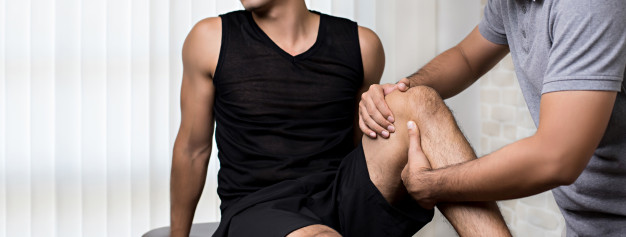ANTERIOR CRUCIATE LIGAMENT
Anterior cruciate ligament (ACL) is one of the four major ligaments of the knee that connects the femur (thigh bone) to the tibia (shin bone) and helps to stabilise the knee joint. The ACL prevents excessive forward movement of the tibia in relation to the femur, as well as limits rotational movements of the knee. Injury to this ligament creates instability, stopping you from performing your daily activities.

ACL tears usually occur in young active patients during non-contact activities. An ACL can be injured in several ways:
-
Sudden change in direction
-
Abrupt stop when running
-
Incorrect landing technique
-
Direct blow to the side of your knee, such as during a rugby or soccer tackle
